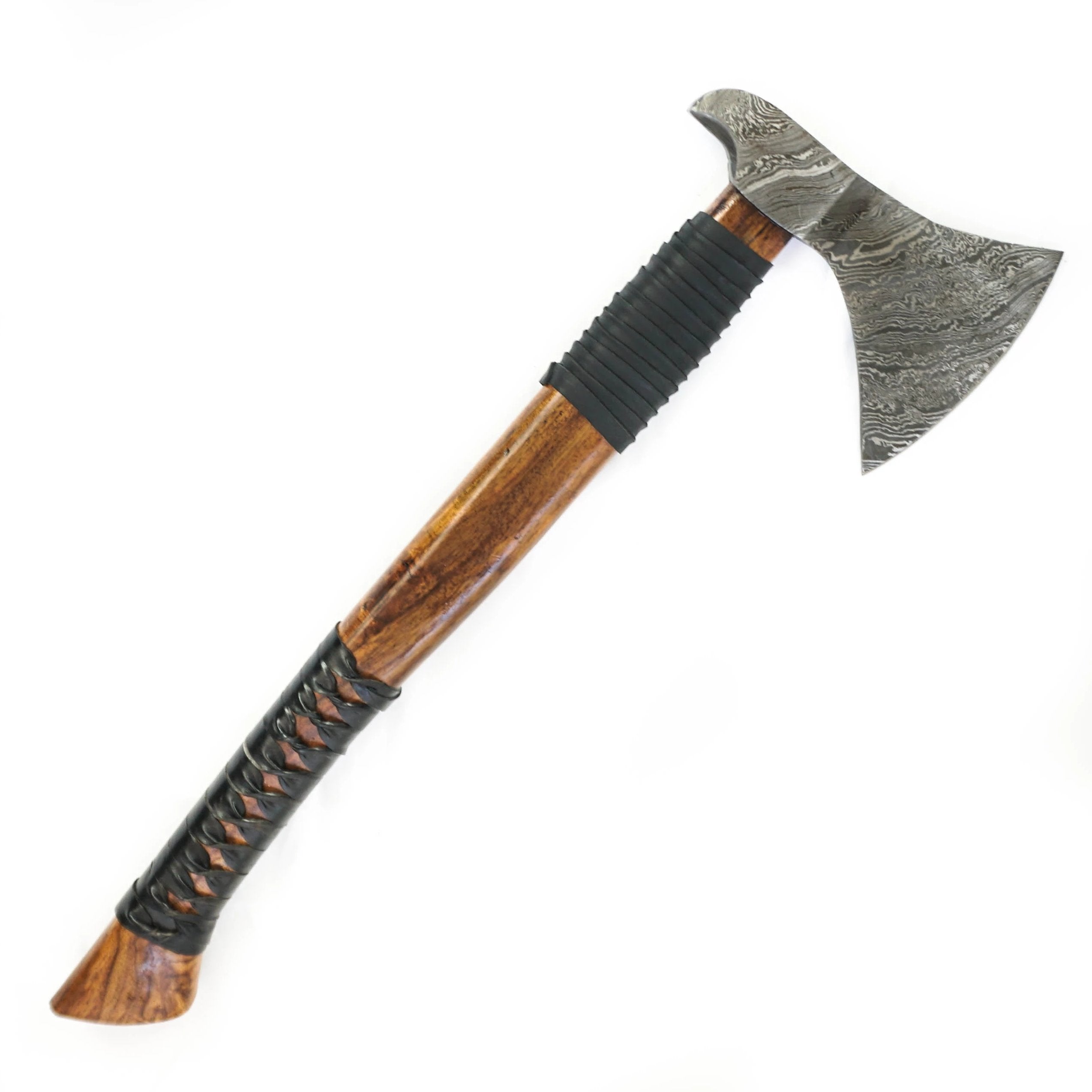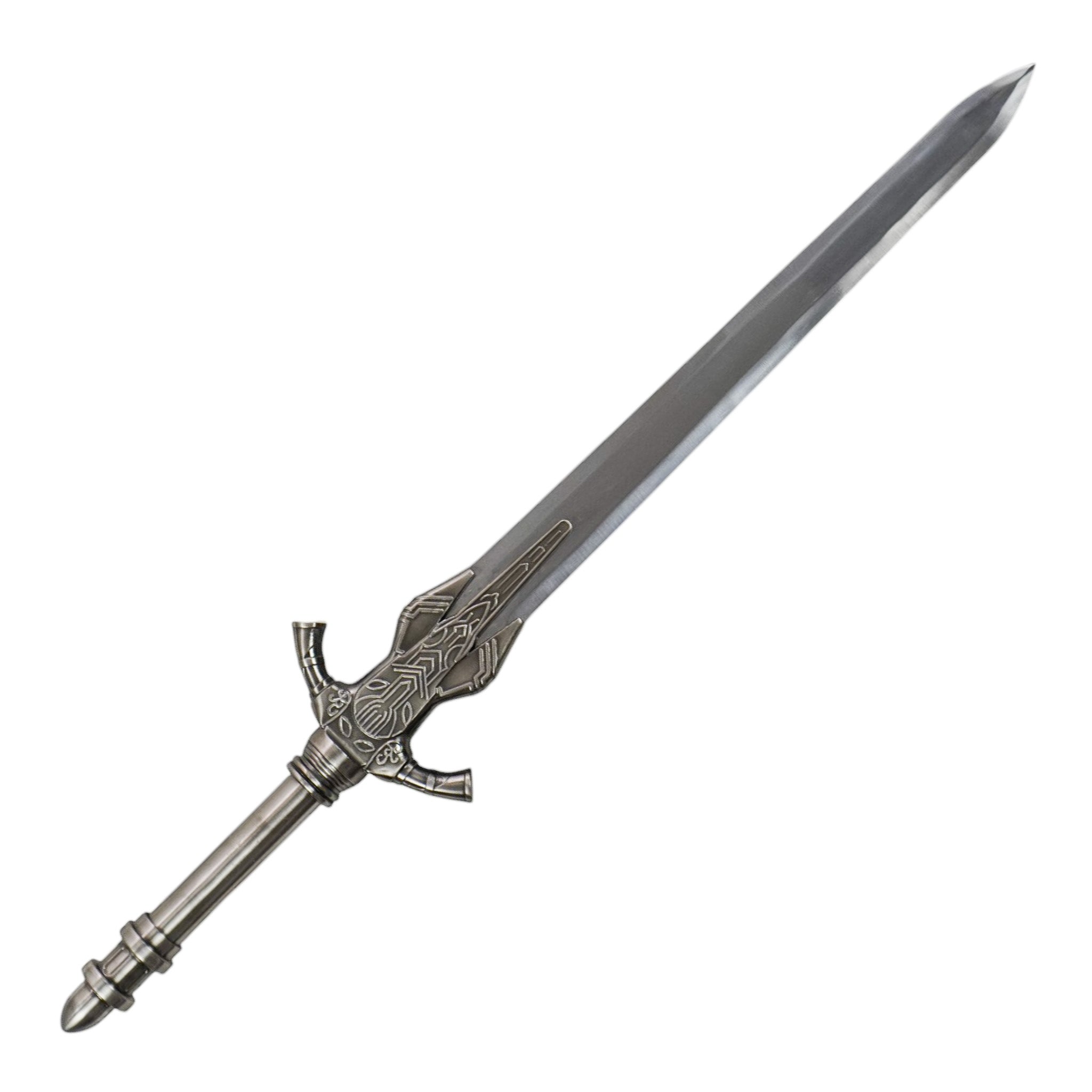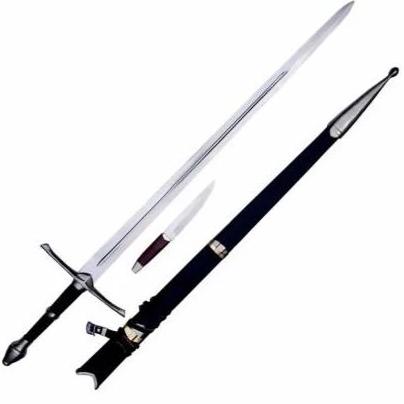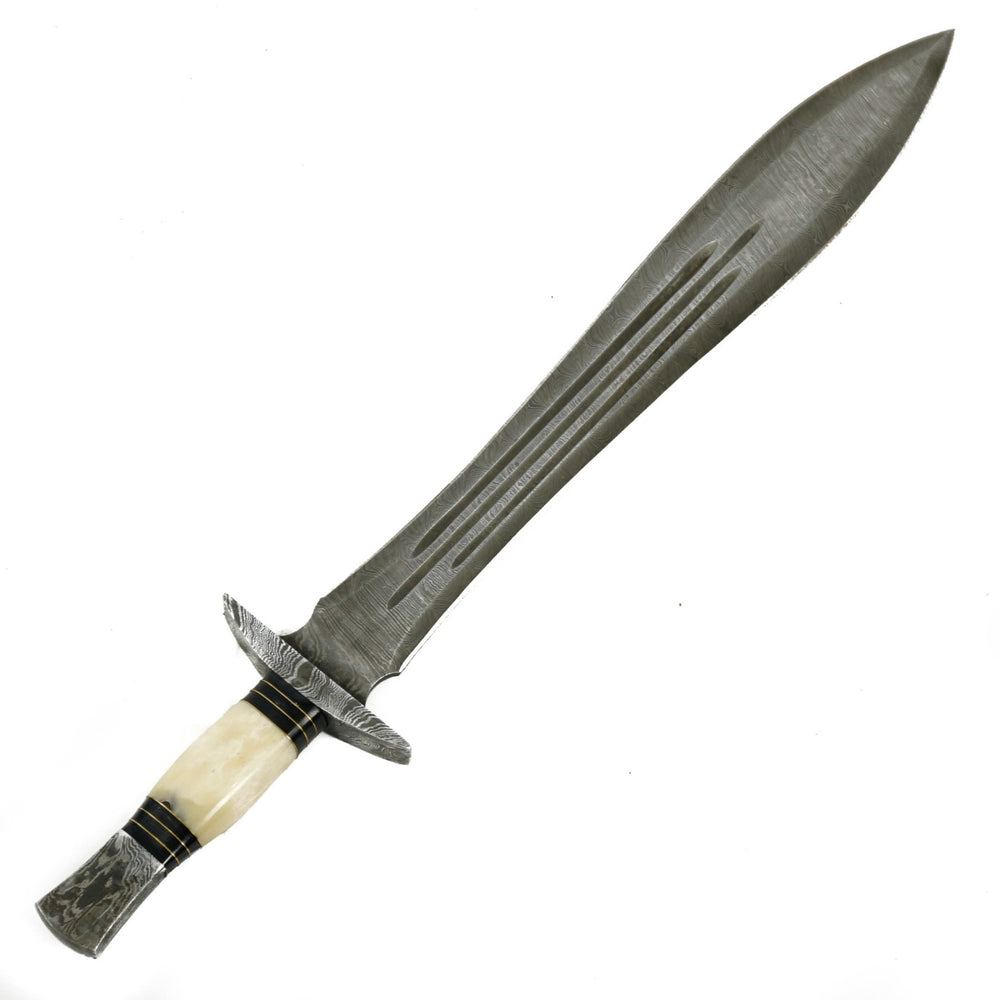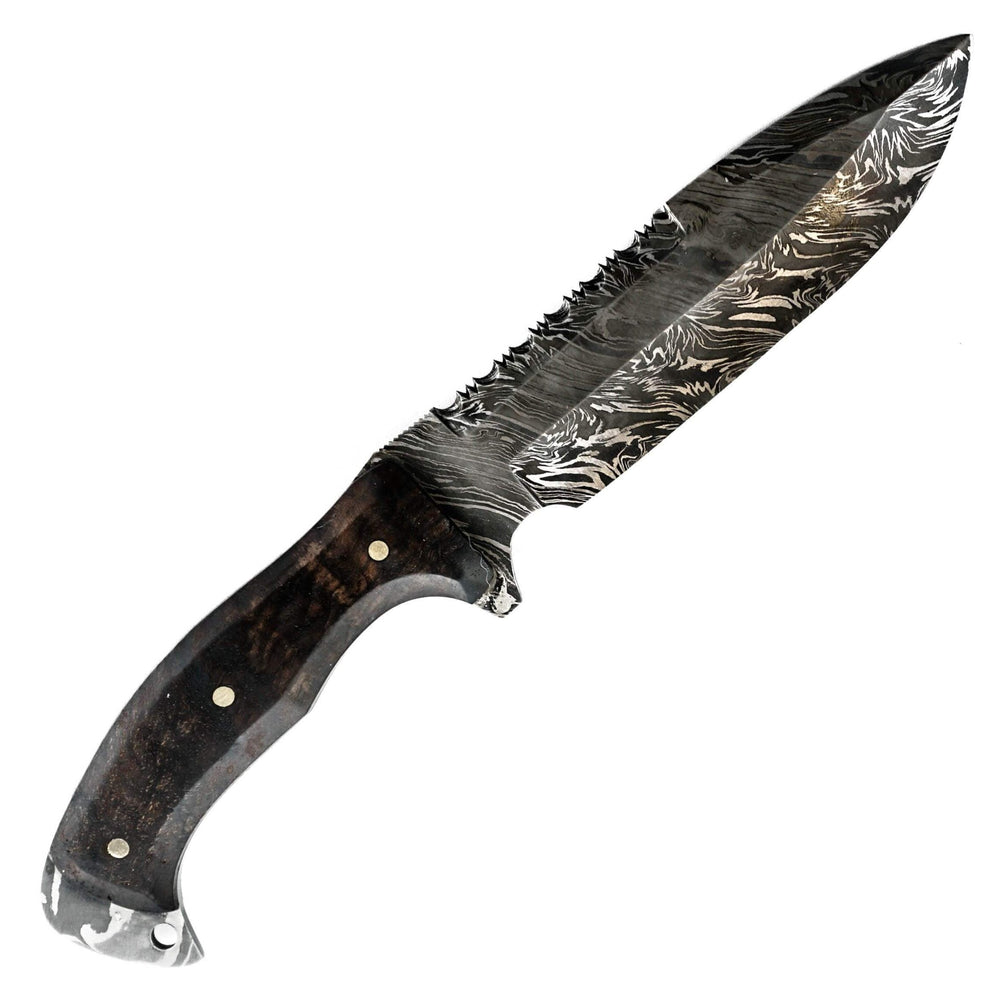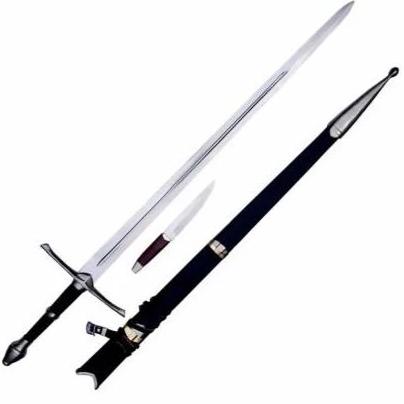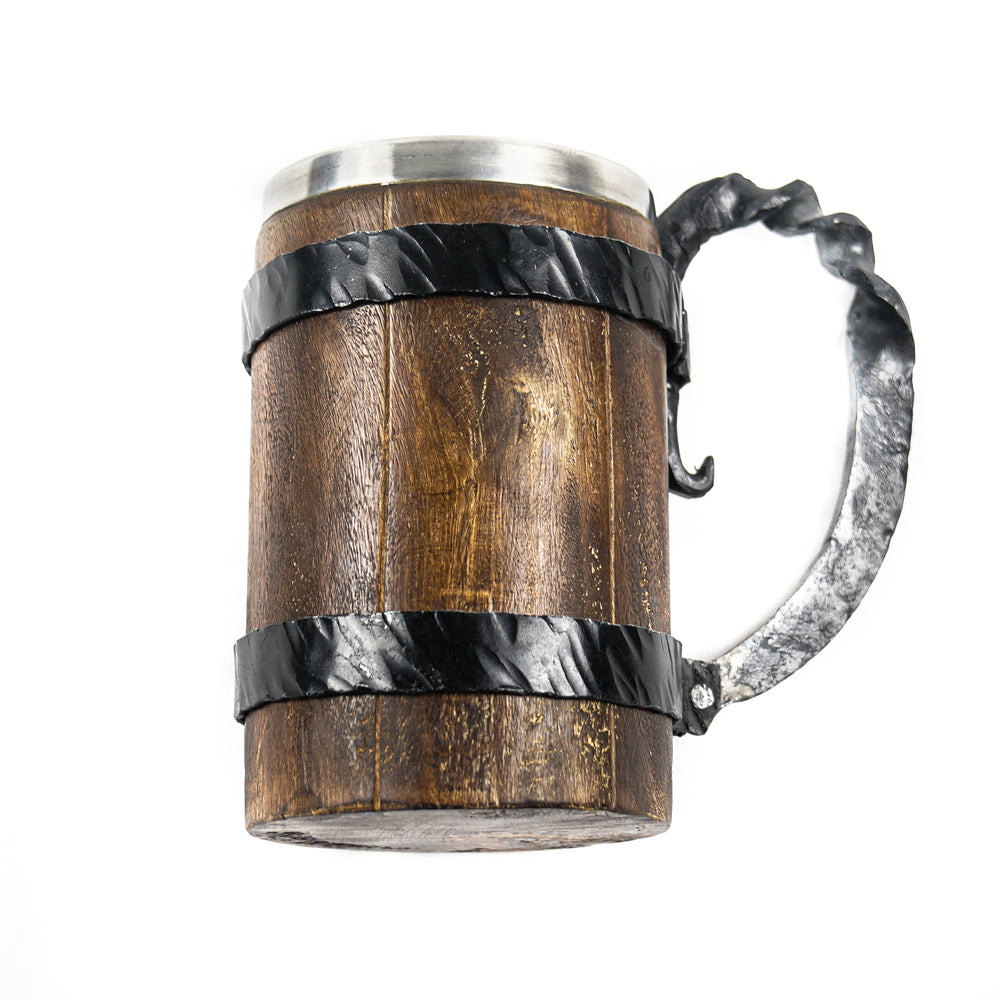Scimitar Vs. Katana: Comparative Analysis Of Iconic Swords
Swords have been integral to human history, symbolizing power, strength, and honor. Today, two swords stand out among all others, Scimitar vs. Katana. Both are iconic weapons with a rich history and a passionate following, but which one is better?
In this comparative analysis of Scimitar vs. Katana, let's take a closer look at the characteristics, strengths, and weaknesses of the swords.
We'll delve into how these swords, with their distinct designs and rich histories, have fascinated warriors and enthusiasts for ages. By the end, we hope to make you better understand these two incredible weapons and their legacies.
Origin And Evolution Of The Scimitar And The Katana
There are various types of middle eastern swords, including the Scimitar Katana, which are the most famous ones worldwide. These two iconic swords have shaped history and captured the imagination of countless enthusiasts.
Let's talk about their origin and evolution, tracing the development of these legendary weapons through different civilizations and eras.
Scimitar
The Scimitar originates in ancient Near Eastern civilizations, where it first emerged as a versatile weapon. Its shape and utility evolved because of the region's geography, warfare tactics, and religious beliefs.
Initially, the Scimitars curved blade was designed for slashing and cutting, allowing for effective attacks on horseback.
As Islamic armies rose to prominence, the Scimitar became synonymous with their military might. The sword's curved shape enabled warriors to deliver powerful blows while riding, making it an integral part of their conquests.
Over the centuries, the Scimitar adapted to changing battle styles and techniques. It became a symbol of status and authority, showcasing the prowess of its wielders.
Today, the Scimitar remains an enduring emblem of the Arabian Peninsula's martial traditions and cultural heritage.
Katana
On the other hand, the Katana traces its origins to feudal Japan and holds a special place in the hearts of samurai enthusiasts. The unique samurai ethos, metallurgical advancements, and deep appreciation for aesthetics prevalent in Japanese society shaped its development.
During Japan's feudal era, the Katana embodied the samurai's honor, skill, and dedication to their code of Bushido. Metallurgy played a significant role in the Katana's evolution, with master swordsmiths crafting blades of exceptional strength, sharpness, and flexibility.
Moreover, Katana's design was a blend of functionality and beauty. Its curved, single-edged blade allowed for precise cuts and strikes, while the careful balance and ergonomic handle enhanced its maneuverability.
In addition, its graceful appearance and meticulous craftsmanship elevated it to a revered status as both a weapon and an objet d'art. It has transcended its historical context in modern times, gaining prominence in pop culture and media.
In fact, it captivates human imagination globally, embodying the samurai spirit and showcasing Japanese swordsmanship's elegance and strength.
Besides, if you’re wondering what sword is better than a Katana, keep reading to find out your answer!
The Scimitar Sword vs. Katana has evolved through centuries of cultural, technological, and societal changes. These swords have left an indelible mark on history, from the ancient Near East battlefields to Japan's feudal courts.
Be it the Scimitar's association with Arabian martial traditions or the Katana's embodiment of samurai ethos, these weapons continue to inspire enthusiasts worldwide.
Check out the collection of Katana Swords at Battling Blades.
Scimitar Vs. Katana: Design And Construction
The Scimitar vs. Sword Katana are two iconic swords with unique designs and construction. Let's find out the fascinating world of these weapons and explore how they are crafted.
Crafting A Scimitar
The Middle Eastern Scimitar boasts a distinct curved blade that sets it apart. The design of the Scimitar allows for powerful slashing motions while maintaining balance and maneuverability. The blade is typically single-edged with a convex curve, making it an effective cutting weapon.
Besides, the hilt of a scimitar is often simple yet functional. It usually features a straight crossguard and a wood, bone, or horn grip. It is designed to provide a comfortable and secure hold during combat.
In addition, the scabbard decorations on scimitars are often ornate, reflecting the rich cultural heritage associated with these swords. Intricate engravings, precious metal accents, and gemstone embellishments adorn the scabbards, adding to their aesthetic appeal.
Making Of A Katana
The Katana, originating from Japan, is renowned for its slender and curved blade. The design of the Katana allows for precise cutting techniques and swift strikes. The blade has a gentle curve along its length, enhancing its cutting efficiency.
The hilt of a katana, known as the Otsuka, is meticulously crafted for balance and grip. It often features intricate wrapping techniques using silk or cotton cords, providing a comfortable hold and an aesthetically pleasing design.
The hilt may also incorporate decorative elements like menuki, ornaments made of metal or silk. Katana scabbards, called saya, are typically made of wood and finished with lacquer for durability.
While Katanas may have simple designs, they are often elegantly crafted, with attention to detail and smooth finishes.
Scimitar Vs. Katana: Compare And Contrast The Basic Features
When comparing the Scimitar and the Katana, several key features differentiate these legendary swords. Let's examine their basic characteristics:
- Blade Curvature: The Scimitar has a pronounced convex curve, while the Katana possesses a gentle curve along the length of the blade.
- Blade Length: Scimitars typically have shorter blades, ranging from 60 to 85 centimeters. On the other hand, katanas usually have longer blades, ranging from 60 to 73 centimeters.
- Hilt Shape: Scimitars generally feature a straight crossguard and a functional grip. In contrast, katanas have a curved guard and an intricately wrapped hilt for improved grip and balance.
- Grip Materials: Scimitar hilts are commonly made from wood, bone, or horn. On the other hand, Katana hilts incorporate luxurious materials like silk or cotton cords.
- Scabbard Decorations: Scimitar scabbards often showcase intricate engravings, precious metal accents, and gemstone embellishments. In contrast, Katana scabbards have simpler designs with lacquered finishes.
Despite their differences, the Scimitar vs. Katana exhibit exceptional craftsmanship and have played significant roles in various cultures throughout history.
Techniques Used To Forge And Sharpen Scimitars And Katanas
The materials and techniques used to forge and sharpen scimitars and katanas contribute to their exceptional quality and performance. To draw a comparison Scimitar vs. Katana, let’s explore the intricacies of both the weapons:
Scimitar
The Arabian sword named Scimitars are historically forged from diverse steels: basic carbon steel to elaborate Damascus steel.
The forging process involves heating the steel to high temperatures and shaping it through repeated hammering and quenching.
Regarding sharpening, scimitars are honed to a keen edge using various sharpening stones and techniques. The goal is to achieve razor-sharp blades capable of delivering precise and powerful cuts.

Katana
Katanas are renowned for their meticulous craftsmanship and the use of specialized materials. Damascus steel stands out, formed by layering diverse steel for an incredibly strong and durable blade.
Another technique is the folding method, where the swordsmith repeatedly folds and layers the steel during the forging process. This technique helps remove impurities and create a stronger blade.
Clay tempering is another crucial technique used in katana production. By applying a specialized clay mixture to the blade before heating and quenching.
The swordsmith creates a distinct hamon, a visible line that separates the hardened edge from the softer spine of the blade.
Polishing is the final step in the production process, where the swordsmith meticulously brings out the blade's luster and sharpness. This process involves using finer and finer abrasives to achieve a smooth and reflective surface.
Combining these materials and techniques results in scimitars and katanas that are stunning and formidable weapons with exceptional cutting capabilities.
Techniques And Tactics Of Wielding
The Scimitar vs. Katana comparison is more than just about beautiful weapons; they are tools that require skill and finesse to wield effectively in combat.
Techniques Used To Wield Scimitars
The Scimitars curved blade blends itself well to slashing motions, allowing for devastating attacks against opponents. Wielders of the Scimitar often employ a combination of sweeping strikes and quick slashes to exploit its cutting power.
In addition to slashing, the Scimitar can also be used for thrusting attacks. By leveraging the point of the blade, users can target specific areas with precision, making it a versatile weapon in close-quarter combat.

Regarding defense, scimitar wielders rely on their agility and speed. They employ nimble footwork and swift parries to deflect incoming attacks, followed by swift counterattacks to maintain momentum.
Katana Techniques
The Katana's design and balance are ideal for swift, precise strikes. Katana users emphasize smooth motions. They use methods like the draw cut, swiftly unsheathing the sword for a strong slash.
Katana practitioners also utilize thrusting techniques, capitalizing on the blade's sharp point. Its versatility allows for close-quarters combat and engagements at longer ranges.
Besides, defense is essential in katana combat. Users rely on techniques like blocking and dodging to deflect incoming strikes while maintaining their position and balance.
Moreover, the Katana's agile nature enables quick evasive maneuvers, allowing practitioners to avoid attacks and create openings for counterattacks.
Advantages And Limitations Of Each Sword Style
While making the comparison Scimitar vs. Katana, each sword style offers distinct advantages and limitations that shape its effectiveness in combat:
Scimitar Advantages
- Speed: The Scimitar's lightweight and agile design makes it a fast weapon, allowing for swift and continuous attacks.
- Versatility: The Scimitars’ curved blade excels in slashing motions, making it effective against multiple opponents or in close-quarters combat.
- Maneuverability: Its balanced construction enables quick changes in direction and fluid movements.
Scimitar Limitations
- Reach: The Scimitar's shorter blade limits its reach compared to other swords, making it less effective in long-range engagements.
- Thrusting: While the Scimitar can be used for thrusting attacks, it is less specialized than other sword styles.
Katana Advantages
- Speed And Precision: The Katana's balanced design allows for lightning-fast strikes and precise cuts, making it lethal in skilled hands.
- Reach: With a longer blade, the Katana provides an extended reach, allowing users to engage opponents from a distance.
- Cutting Power: Combining a sharp blade and proper technique gives the katana exceptional cutting power.
Katana Limitations
- Weight: The Katana's slightly heavier construction may require more strength and stamina to wield effectively over extended periods.
- Complexity: Mastering the intricate techniques of the Katana requires time and dedication, making it less accessible for beginners.

Cultural And Psychological Factors Shaping Strategies And Mindsets
Cultural and psychological factors heavily influenced the strategies and mindsets of scimitar and katana users. Let's explore some of these key influences:
Factors Influencing Scimitar Strategies
Scimitar users often hailed from cultures with strong tribal and warrior traditions. Honor, loyalty, and courage were paramount.
These warriors valued agility and speed, employing hit-and-run tactics to outmaneuver opponents. Duels and personal combat played significant roles, with strict codes of conduct governing engagements.
Factors Influencing Katana Strategies
Katana users were deeply rooted in the samurai culture of feudal Japan. Honor, loyalty to their lord, and Bushido, the warrior's way, were core principles.
Samurai warriors trained rigorously in martial arts and practiced Zen Buddhism to cultivate mental clarity and discipline. Strategies revolved around single combat, emphasizing precision, technique, and maintaining a calm and focused mindset.
These swords mirrored the cultural and mental traits of their origins, influencing the strategies and mindsets of wielders in combat.
Comparison With Other Swords
- Sabre Vs. Scimitar: Sabres and scimitars are curved swords, but sabers often have a single edge and are more versatile. In contrast, scimitars typically have a wider curve and are associated with Middle Eastern cultures.
- Sabre Vs. Katana: Sabres and katanas come from different cultures. Sabers have curved blades and are often used for cavalry. In contrast, katanas are iconic Japanese swords with a sharp edge and a slight curve.
- Scimitar Vs. Sabre: Scimitar and Sabre are used interchangeably to describe curved swords. Scimitar is more associated with Eastern designs, while Sabre is often linked to Western cavalry swords.
- Scimitar Vs. Longsword: Scimitars have a curved blade, making them effective for slicing, while longswords have a straight blade, which balances cutting and thrusting techniques.
- Scimitar Vs. Falchion: Scimitars and falchions are both curved blades. However, falchions have a broader curve near the tip, which gives them a unique chopping capability. In contrast, scimitars have a more consistent curve along the length.
The Final Say
The Scimitar and Katana swords are iconic weapons with unique features and rich histories.
The Scimitar is one of the Middle Eastern sword types designed for efficient slashing movements. In contrast, the Katana hails from Japan and excels in precision cutting. Both the swords have been used in various battles and have become symbols of power and strength.
However, their differences range from the blade shape, size, weight, and curvature to the materials used in their construction.
A Scimitar’s curved blade and heavier weight make it ideal for horseback riding, In contrast, the Katana's straight blade and lighter weight make it more suited for close combat. Additionally, the Katana requires more craftsmanship due to its intricate design.
Ultimately, the choice between the Scimitar vs. Katana comes down to personal preference and the intended use of the sword. Regardless of which sword is favored, they both represent a rich cultural heritage and are celebrated for their impressive capabilities.
If you want to get hold of these ancient works of art, reach out to Battling Blades and explore their extensive collection of Scimitars and Katanas.

